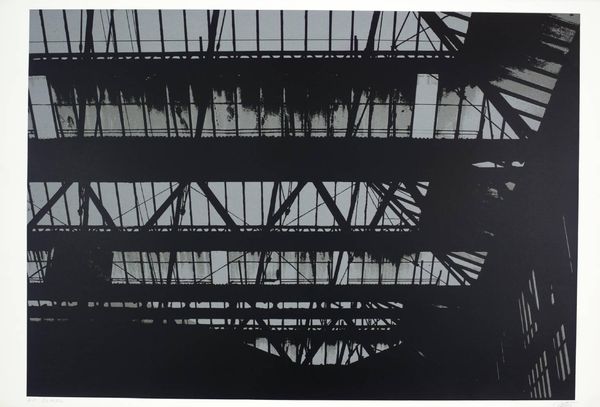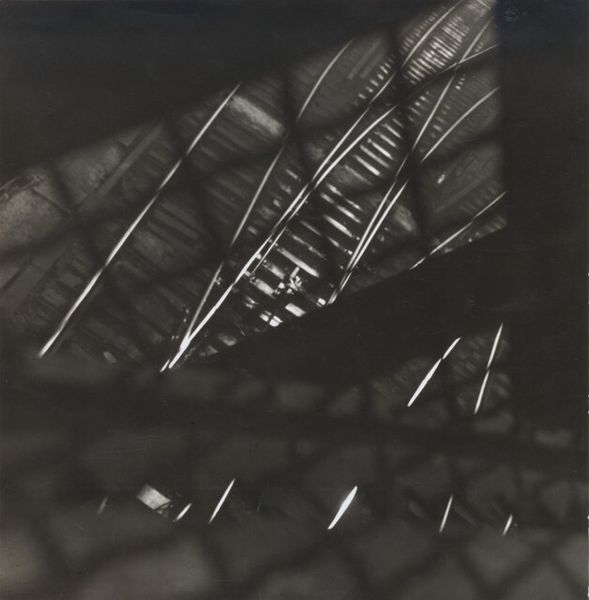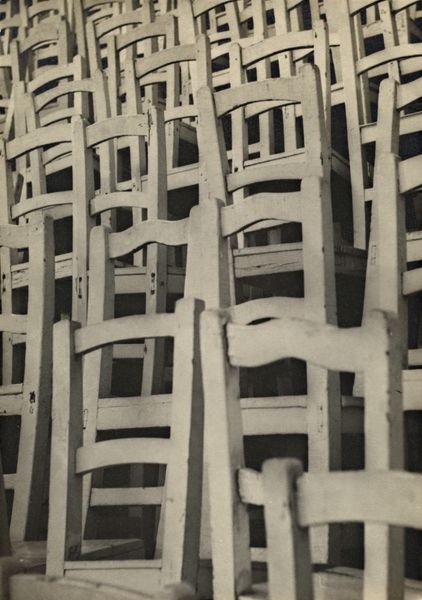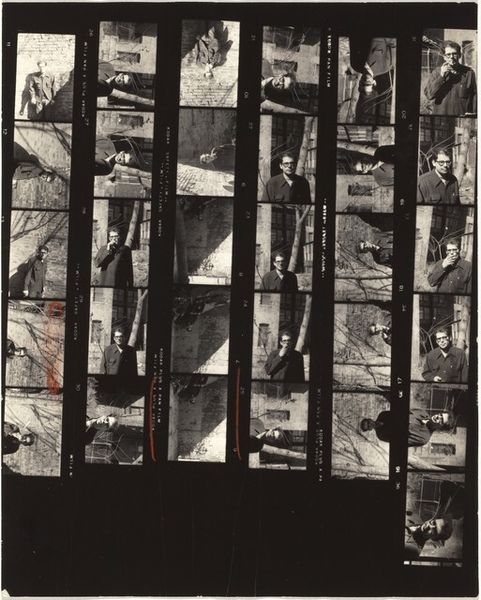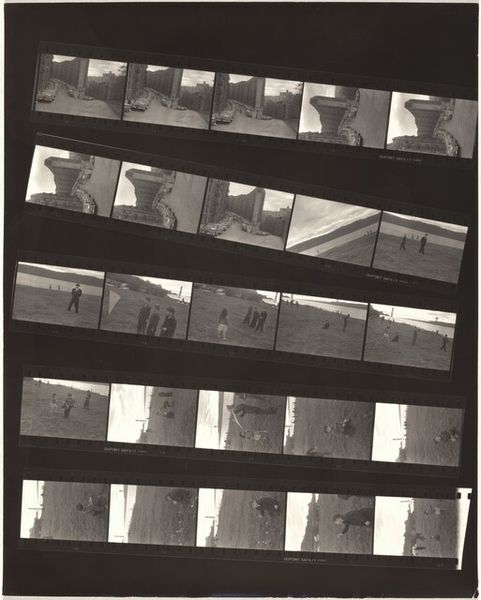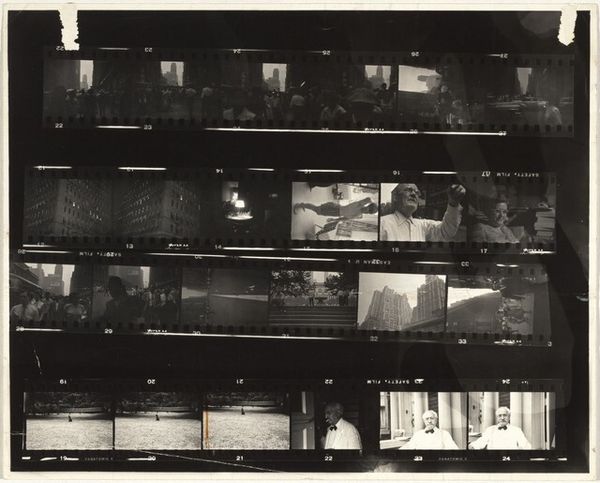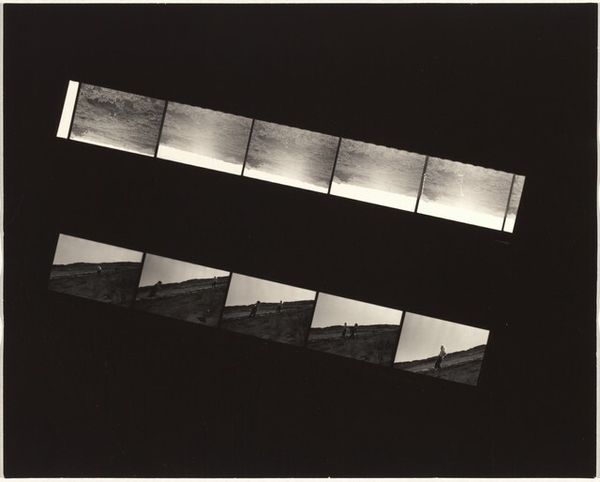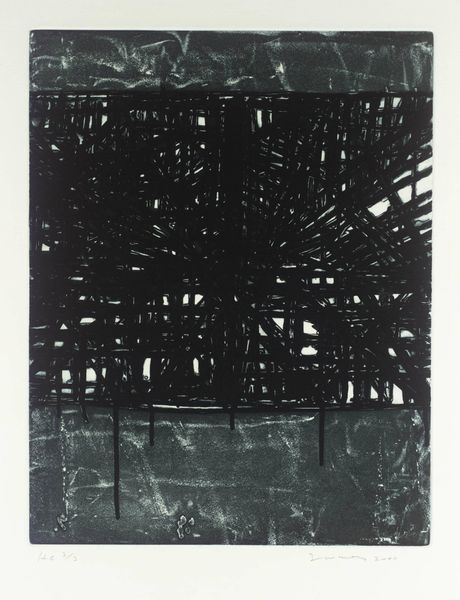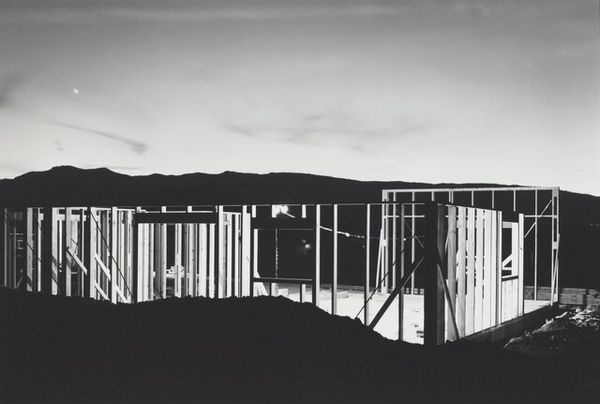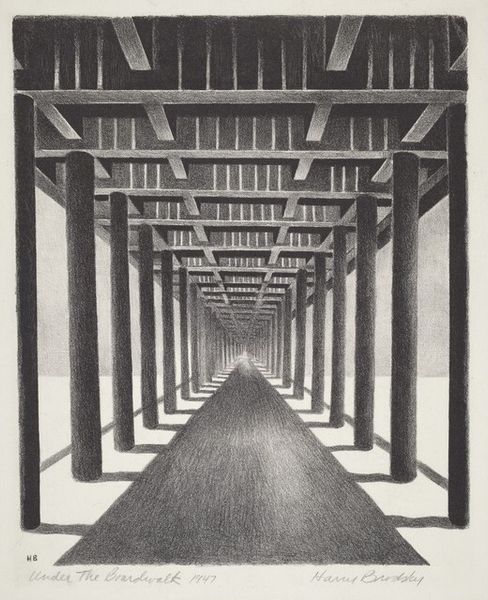
photography
#
black and white photography
#
sculpture
#
black and white format
#
street-photography
#
photography
#
monochrome photography
#
line
#
cityscape
#
monochrome
#
monochrome
Dimensions: image: 21.7 x 19.1 cm (8 9/16 x 7 1/2 in.) sheet: 25.4 x 20.1 cm (10 x 7 15/16 in.)
Copyright: National Gallery of Art: CC0 1.0
Curator: So, here we have Ralph Steiner's "Park Avenue Garage," a black and white photograph, likely taken sometime between 1965 and 1981. Editor: It feels like a puzzle! An urban optical illusion. The crisscrossing shadows are mesmerizing. Curator: Exactly. Steiner’s play with light and shadow transforms a mundane parking garage facade into something quite architectural and abstract, don't you think? Look at how those strong lines create a pattern...almost like a musical score. Editor: I'm also struck by how it almost feels like it's veiling something, or hinting at something just out of reach. The garage, the cars—all of it is somehow obscured by the power of light playing on a flat surface. Curator: It evokes that mid-century modernist sensibility, the beauty found in the everyday geometry of the city. The parking rates sign, fragmented by shadow, anchors it in a specific time, a concrete reality... a bygone era of slightly more affordable parking. Editor: Ha! I noticed the parking sign too, and to me it symbolizes time—its relentless passage. The shadow transforming architecture can mean things falling into ruin, but light shining also suggest revelation, which balances out the image. What is ruined, then? Only our preconceived notions? Curator: It's funny you say that. Steiner always pushed the boundaries of documentary photography. He was known for imbuing even the most ordinary subject with emotion and meaning, for not settling with a pretty picture and questioning the very reality that photography records. Editor: Ultimately, the photograph, for me, carries both beauty and a quiet foreboding. As if the image contains the ghosts of the vehicles parked there—traces of lives on the go—or paused indefinitely? Curator: That duality is what makes Steiner's work so enduring. A humble street scene becomes a powerful reflection on light, time, and the urban experience. Editor: Yes. The beauty and hidden symbols lurking where we least expect it—within the seemingly commonplace structure of urban existence. It is not really a portrait of an industrial parking unit as much as it is about our emotional association with modernity.
Comments
No comments
Be the first to comment and join the conversation on the ultimate creative platform.
